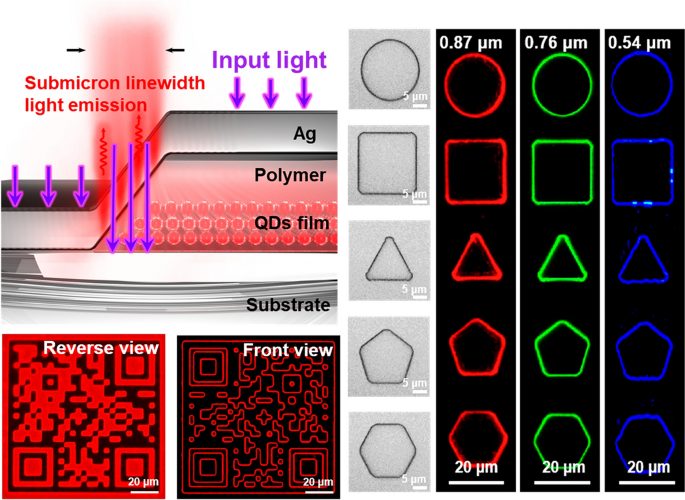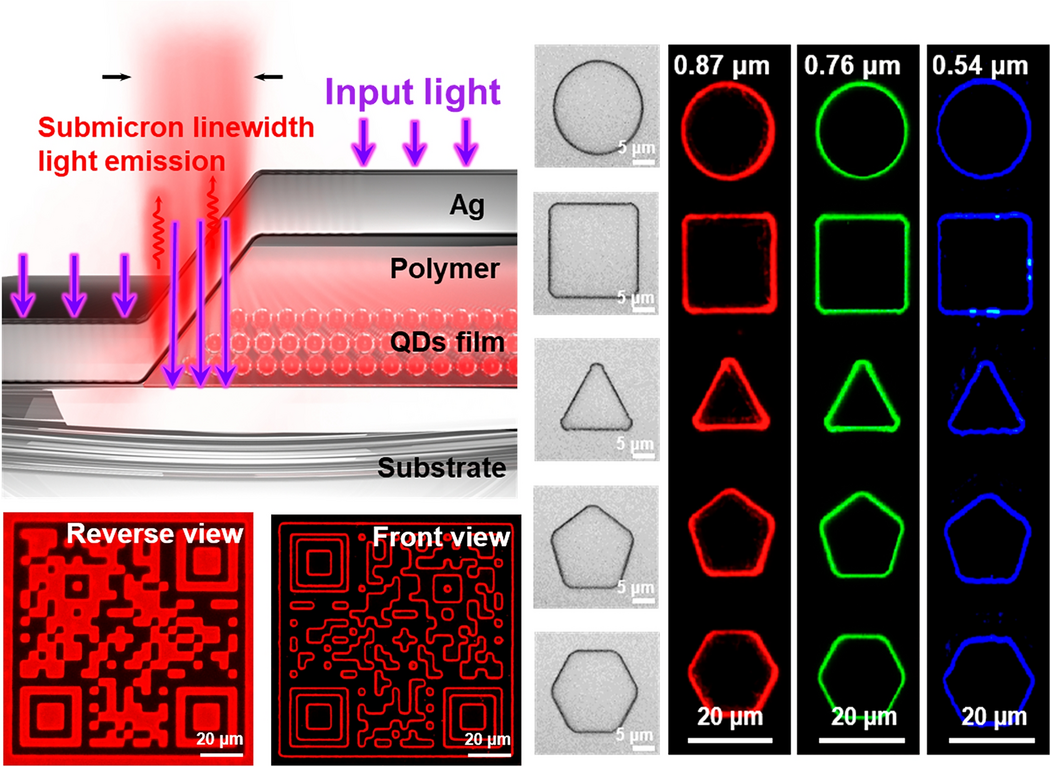Shadow‑Assisted Sidewall Emission for Achieving Submicron Linewidth Light Source by Using Normal UV Photolithography

The development of submicron light sources has long been a challenging yet crucial pursuit in various scientific and technological fields, from bioimaging to optogenetics and beyond. However, the fabrication of such high-resolution light sources often relies on complex and advanced micro-nano processing techniques, limiting their large-scale application. Now, researchers from the College of Physics and Information Engineering at Fuzhou University and the Fujian Science & Technology Innovation Laboratory for Optoelectronic Information of China, led by Professor Chaoxing Wu, have proposed a novel and efficient method known as Shadow-Assisted Sidewall Emission (SASE) to achieve submicron linewidth light sources using only conventional UV photolithography. Their groundbreaking findings are published in Nano-Micro Letters.
Why SASE Matters
- High-Resolution Light Sources with Arbitrary Patterns: The SASE technique enables the fabrication of submicron light sources with arbitrary patterns using normal UV photolithography, overcoming the limitations of traditional methods that require complex equipment and processes.
- Strong Scalability and Versatility: The submicron light sources created via SASE exhibit strong scalability and have been successfully demonstrated in various applications, including optical anti-counterfeiting. This method can be applied to different materials and substrates, such as flexible PEN substrates, expanding its potential uses.
- Enhanced Optical Performance: By precisely controlling the emission of light from polymer sidewalls through metal shadow modulation, SASE achieves photoluminescent light sources with submicron line widths. This method also allows for the fabrication of red, green, and blue submicron light sources, showcasing its potential for multi-color applications.
Innovative Design and Mechanisms
- Utilization of Sidewall Effect: The SASE method leverages the sidewall effect inherent in the UV photolithography process. By introducing a slight tilt angle at the edge of the photosensitive polymer, the horizontal projection size of the emission window is significantly reduced, leading to the formation of light sources with submicron linewidths.
- One-Step Metal Deposition: The SASE process involves a one-step thermal evaporation of a metal film (e.g., Ag), which simultaneously forms a semitransparent metal film on the polymer sidewall and a non-transparent metal film on the upper surface. This design ensures that light emission occurs only from the emission window, enhancing the resolution and efficiency of the light sources.
- Optimization of Process Parameters: The study investigates the effects of various process parameters, including exposure dose, development time, and metal film thickness, on the linewidth of the submicron light sources. It is found that an optimal combination of these parameters can achieve the narrowest linewidth and the best performance.
Future Outlook
- Scalability and Practical Applications: The simplicity and scalability of the SASE method highlight its potential for large-scale production and practical applications in various fields, such as high-resolution displays, microspectroscopy, and advanced optical devices.
- Further Research: Future work may focus on optimizing the process parameters and exploring other materials to further enhance the performance and functionality of the submicron light sources. Additionally, integrating SASE with emerging technologies, such as flexible electronics and nanophotonics, could open up new opportunities for innovative applications.
- Mechanistic Insights: This study provides valuable insights into the role of the sidewall effect and metal film deposition in achieving submicron light sources. It offers a promising path for the development of next-generation micro light sources with ultra-high resolution and tunability.
Stay tuned for more exciting advancements from Professor Chaoxing Wu and his team as they continue to explore the potential of SASE and push the boundaries of micro light source technology!
Follow the Topic
-
Nano-Micro Letters

Nano-Micro Letters is a peer-reviewed, international, interdisciplinary and open-access journal that focus on science, experiments, engineering, technologies and applications of nano- or microscale structure and system in physics, chemistry, biology, material science, and pharmacy.






Please sign in or register for FREE
If you are a registered user on Research Communities by Springer Nature, please sign in